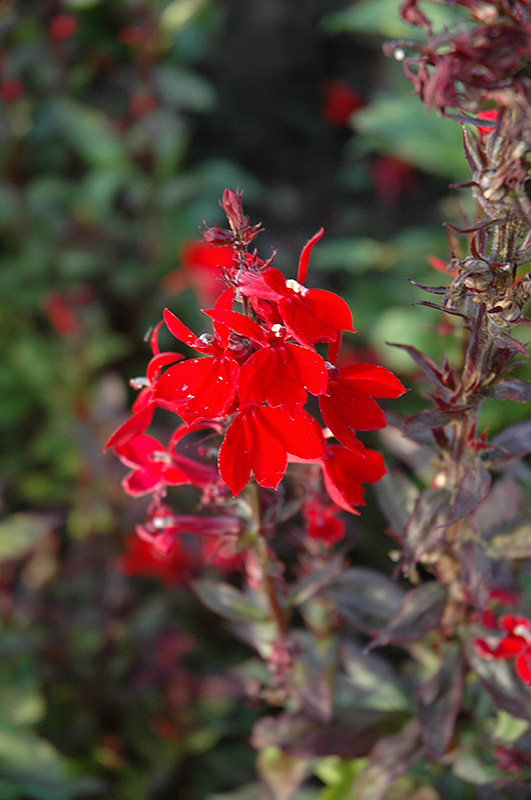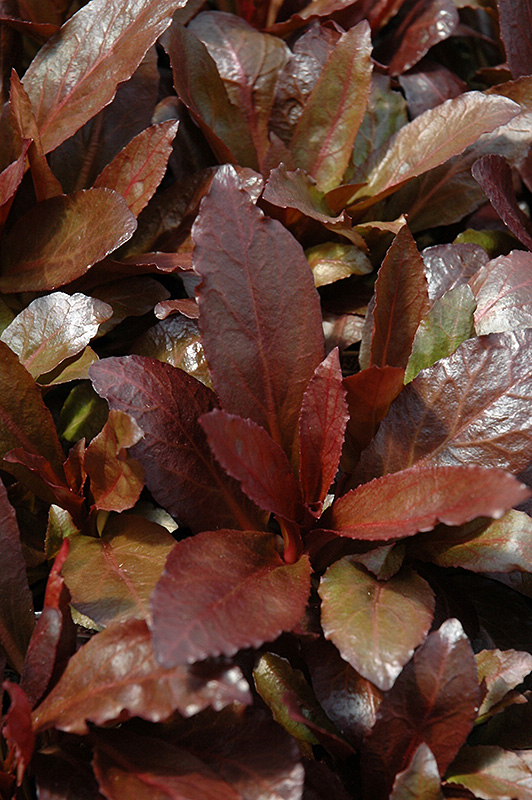Queen Victoria Lobelia
Lobelia 'Queen Victoria'
Height: 24 inches
Spacing: 15 inches
Sunlight:
![]()
![]()
Hardiness Zone: 4a
Other Names: Cardinal Flower
Description:
This wonderful variety differs in its vigor, tremendous flower output, and leaf color; an excellent border plant for most locations; brilliant red flower spikes stand tall above stunning burgundy foliage
Ornamental Features
Queen Victoria Lobelia features showy spikes of red flowers rising above the foliage from mid summer to early fall. The flowers are excellent for cutting. Its attractive pointy leaves remain burgundy in color throughout the season.
Landscape Attributes
Queen Victoria Lobelia is an herbaceous perennial with an upright spreading habit of growth. Its medium texture blends into the garden, but can always be balanced by a couple of finer or coarser plants for an effective composition.
This is a relatively low maintenance plant, and is best cleaned up in early spring before it resumes active growth for the season. It is a good choice for attracting butterflies and hummingbirds to your yard. It has no significant negative characteristics.
Queen Victoria Lobelia is recommended for the following landscape applications;
- Mass Planting
- General Garden Use
Planting & Growing
Queen Victoria Lobelia will grow to be about 20 inches tall at maturity, with a spread of 18 inches. When grown in masses or used as a bedding plant, individual plants should be spaced approximately 15 inches apart. It grows at a fast rate, and under ideal conditions can be expected to live for approximately 5 years. As an herbaceous perennial, this plant will usually die back to the crown each winter, and will regrow from the base each spring. Be careful not to disturb the crown in late winter when it may not be readily seen!
This plant does best in full sun to partial shade. It is quite adaptable, prefering to grow in average to wet conditions, and will even tolerate some standing water. It is not particular as to soil pH, but grows best in rich soils. It is somewhat tolerant of urban pollution. This particular variety is an interspecific hybrid, and parts of it are known to be toxic to humans and animals, so care should be exercised in planting it around children and pets. It can be propagated by division; however, as a cultivated variety, be aware that it may be subject to certain restrictions or prohibitions on propagation.
This tool is an online resource representing many of the varieties that we carry over the course of the season, and is intended for informational purposes only. Inventory varies seasonally, so we cannot guarantee that every plant will be in stock at all times - please contact the store directly for current availability. It does not include our entire selection of plants, so be sure to visit our store to see varieties that may not be represented on this list.

